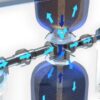
How OCCO Courtroom Animation Can Help Your Case
If you’re in the market for a courtroom animation service, you’ve probably heard of OCCO. The company specializes in courtroom animations for a variety of different types of cases, including Forensic and Color. But what is courtroom animation, and how does it work? This article provides an overview of courtroom animation and discusses the key features of a high-quality animation. Read on to learn more about how courtroom animations can help your case.
OCCO
Trial animators at OCCO use state-of-the-art 3D imaging software to design realistic trial scenes. These graphics are a valuable part of the jury’s education about the nature of the injury and the defendant’s defense. Trial graphics can also convey the position of the parties or the mechanism of injury. The talented team at OCCO has the experience, skills, and expertise to create convincing courtroom animations for your case.
OCCO’s expert animators used photos from the law firm’s investigators to develop ten detailed sketches. From these sketches, OCCO’s animators developed a rigged scale model of the plaintiff’s body to recreate the dynamics of a fall. In addition to creating the video, the team also produced trial presentations. The result was a stunning, high-impact presentation of the client’s case.
OCCO’s Courtroom Animations
OCCO has the expertise and technology to create compelling courtroom animations that help clients win their cases. This type of animation is typically used at trial or mediation to educate the jury about the facts and injuries of the case. Courtroom animations are especially valuable during mediation sessions, as they can show jurors the extent of an injury, in a visual format. These animated videos can be extremely useful for maximizing the value of a verdict.
Forensic animations, meanwhile, are increasingly used in criminal and civil cases. Using expert testimony and other evidence, these illustrations can depict anything. The purpose is to make a significant point to the jury. For example, an OCCO animation can depict a victim’s body in three-dimensional detail. Forensic animations often feature body charts of knife or gunshot victims. Body charts can also include trajectory rods that show the angle of entry and exit wounds.
Forensic Animation
Forensic animation is a computer-generated illustration used to illustrate courtroom testimony. These illustrations can be useful for many types of court cases, including murder trials and personal injury lawsuits. The forensic animation process can be very useful prior to trial as it can help expedite settlements in mediation and arbitration. During the early stages of the project, the forensic animators will review the evidence in a virtual three-dimensional scene to identify missing or inconsistent information.
The process of forensic animation helps attorneys better prepare for the courtroom. It involves a thorough analysis and visual check, as well as discussion between attorneys and jurors. In addition to forensic animation, a juror will have a better understanding of the evidence being presented, as clear and accurate visuals are a key component of presenting a good case. Using forensic animation is a great way to make sure that the evidence is correct and that jurors will believe the attorney’s arguments.
Austin Visuals work samples 2023
Color
Injury cases can benefit from using color courtroom animation. The size of the case should be considered in addition to the concept being communicated. An injury case may involve pollution or the internal workings of a machine. It is also important to consider the costs of an animation. Color animation has many advantages in a courtroom. This article will discuss some of the most common uses of color courtroom animation. In addition, it is possible to create an animated presentation in After Effects.
The appeals court ruled that color courtroom animation does not create a “substantial danger” of unfair prejudice because it does not depict blood or sound or mannequins with facial expressions. Additionally, the trial judge explained to the jury that the purpose of the animation was to illustrate the expert’s opinion and allowed cross-examination of the expert. The animation was also clinical and did not arouse any emotional response.
Voice-Overs
Voice-overs for courtroom animations are important for a variety of reasons. Not only do they add credibility to the content, but they also serve as an important part of the production process. Courtroom animations require the use of voices to illustrate the story, and they can help the audience understand the law in a more meaningful way. But how do they do this? Voice-overs are actors who record text and provide the narration of the story. They do not have to be actors or actresses, but they must have a good speaking voice and diction.
Many agencies hire voice-over actors for a variety of purposes. One popular choice is the creation of animated movies. These films are designed to educate audiences about various topics. For example, a courtroom animation will need to communicate with juries, which is why the actors are needed to convey information to the jury. If you are the voice actor for a courtroom animation, you will need to have a wide range of voice talents.
Laser Disk
When it comes to presenting a case to a jury, laser disk courtroom animation has a number of advantages. The visual aids are easy to understand, which means that lawyers can work more efficiently. Because it is digital, the presentation can also include commentary. An expert can play the video and give commentary while going through it frame by frame. It’s a unique method of presenting animation that serves two purposes.
Before choosing a laser disk animation provider, attorneys must determine the size and scope of their case. They should also determine how important animation will be to the case. For example, if the case involves expert testimony, the attorney should bring this witness into the discussions with the animator. A misunderstood expert’s opinion can result in an animation that does not represent their opinion correctly. This may cost them the case. In addition, the animation firm must review the jury’s judgment before making a final decision.




